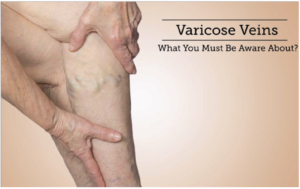
Varicose Veins is a condition in which an individual’s veins become swollen and warped or twisted, which is visible on the skin. This condition most often is prevalent in the legs but can occur in any part of the body. Varicose Veins is a common medical condition with a few symptoms and signs. It affects the skin tone and texture for which some people undergo a treatment.
These symptoms might not affect the person seriously, but they can get severe depending upon different conditions. Usually, Varicose Veins does not require medical treatment, but if it gets severe, then one needs to see the doctor or undergo surgery, which happens rarely. This condition can be easily diagnosed through physical examinations, but one might need to undergo some medical tests depending upon the severity of the condition.
Problems Related to Varicose Veins:
Some of the most common problems related to Varicose Veins are:
1. Telangiectasias: In this condition, blood vessels form a cluster, mostly on the upper body and face. They appear red and can be caused by many reasons such as genetic disarray, liver problems, pregnancy, or viral diseases. Although this is not something to worry about, one should consult the doctor if other symptoms accompany it too.
2. Spider Veins: This condition of Spider Veins is concerned with the smallest blood vessels called Capillaries. They are called spider veins because they develop mostly on legs and face and appear like a spider web. They are a moderate form of telangiectasias and hence does not really need medical treatment.
3. Varicoceles: Varicoceles appears in the scrotum region of the male body or over the testicle skin. This condition might result in infertility in males. A doctor should be immediately consulted if such a condition is seen.
Symptoms:
The Varicose Veins is not a serious medical problem unless the patient is going through severe pain and significantly manifested symptoms. There are many symptoms to identify the condition.
1. A visible cluster of blue or purple looking veins.
2. Frequent leg cramps.
3. Shrinking of skin of the ankle as a result of Lipodermatosclerosis (hardening of fat under the ankle skin).
4. Veins become tumefy or swollen and warped or twisted.
5. Ankles become swollen.
6. Throbbing legs.
7. Blood clots.
8. An unusual amount of bleeding in the affected part with a small injury.
9. Restless leg syndrome.
10. Scars like white, irregular patches on the ankle (Atrophie Blanche).
11. Redness, itchiness, and dryness on the affected area (stasis dermatitis or venous eczema).
12. Skin Discoloration.
13. Skin ulcers.
Precautions:
There are some precautions that one can take to relieve the pain caused by Varicose Veins.
1. Avoid standing for a longer period of time.
2. Maintain a healthy and balanced weight.
3. Sitting with legs straight and uncrossed.
4. Exercising.
5. Avoid wearing tight-fitting clothes.
6. Elevating legs while relaxing.
Take away:
Varicose Veins is a condition in which blood vessels get clustered in a part of the body under the skin. The veins appear blue or purple and become swollen and twisted. This condition is often not a serious medical problem, but in some cases, it might need surgery to avoid any serious issue. This can be treated by precautions and medications, but one can undergo surgery to get rid of the texture and view of the clustered veins. The recovery of Varicose Veins is quicker




